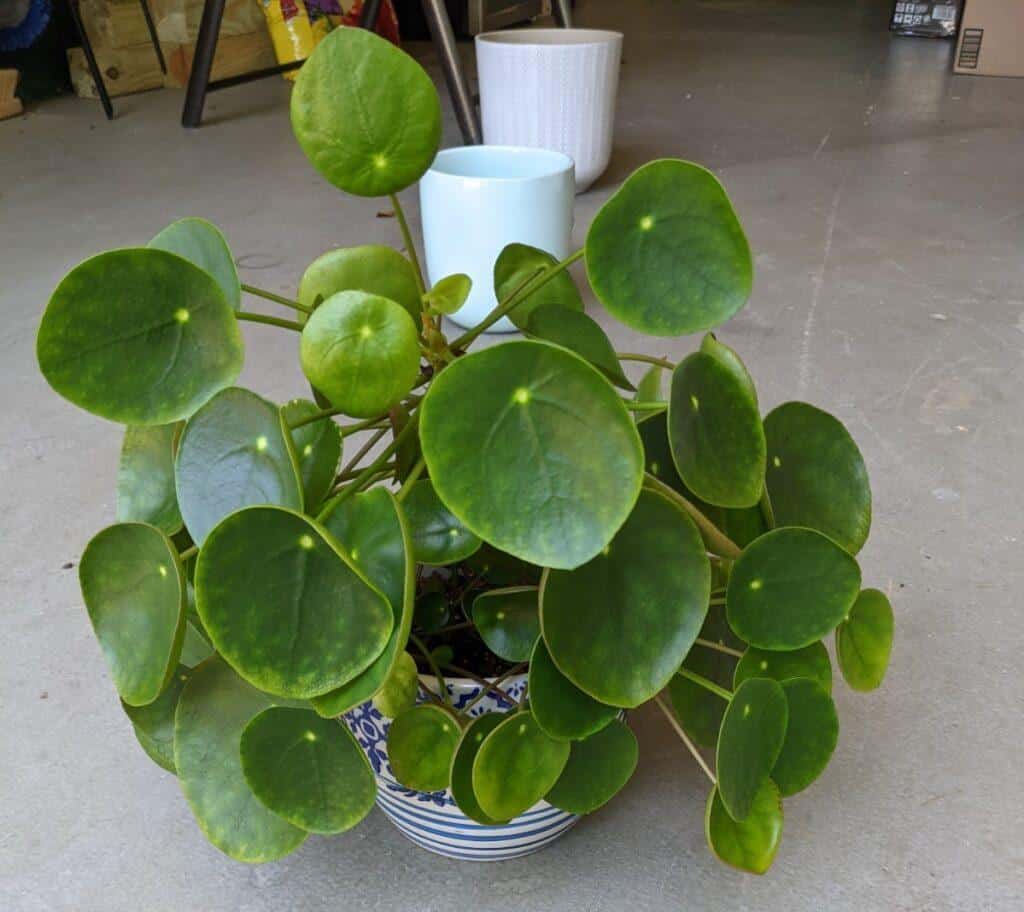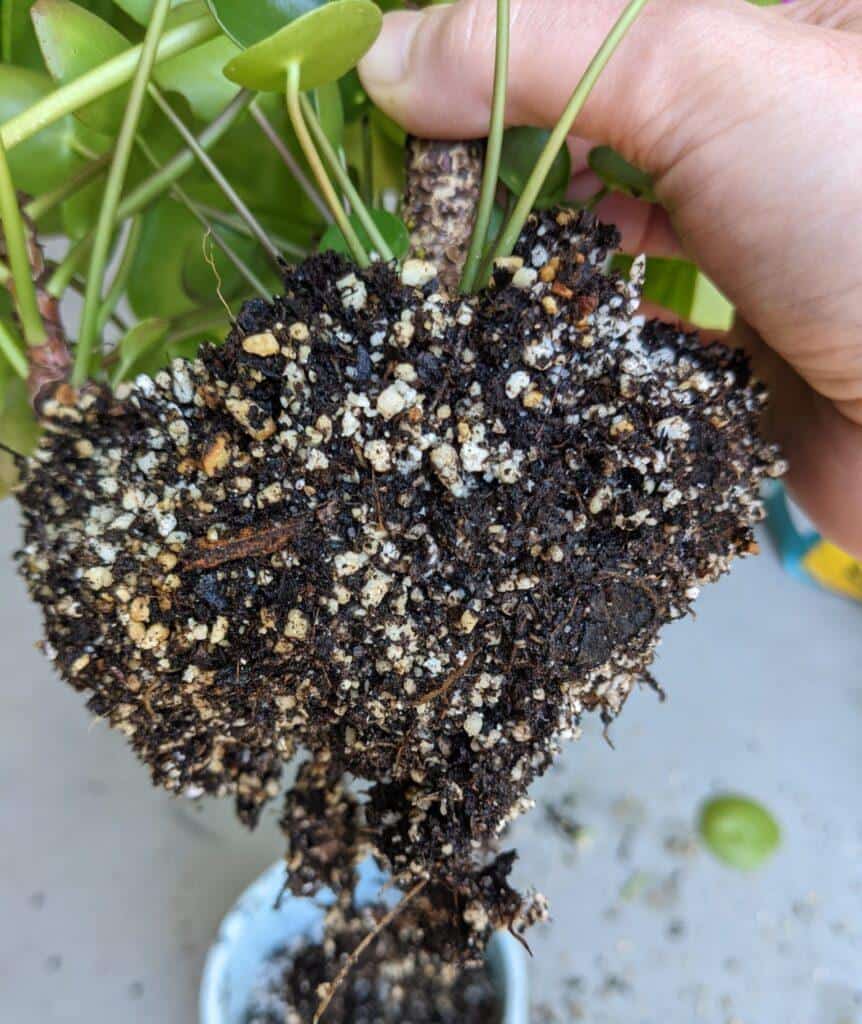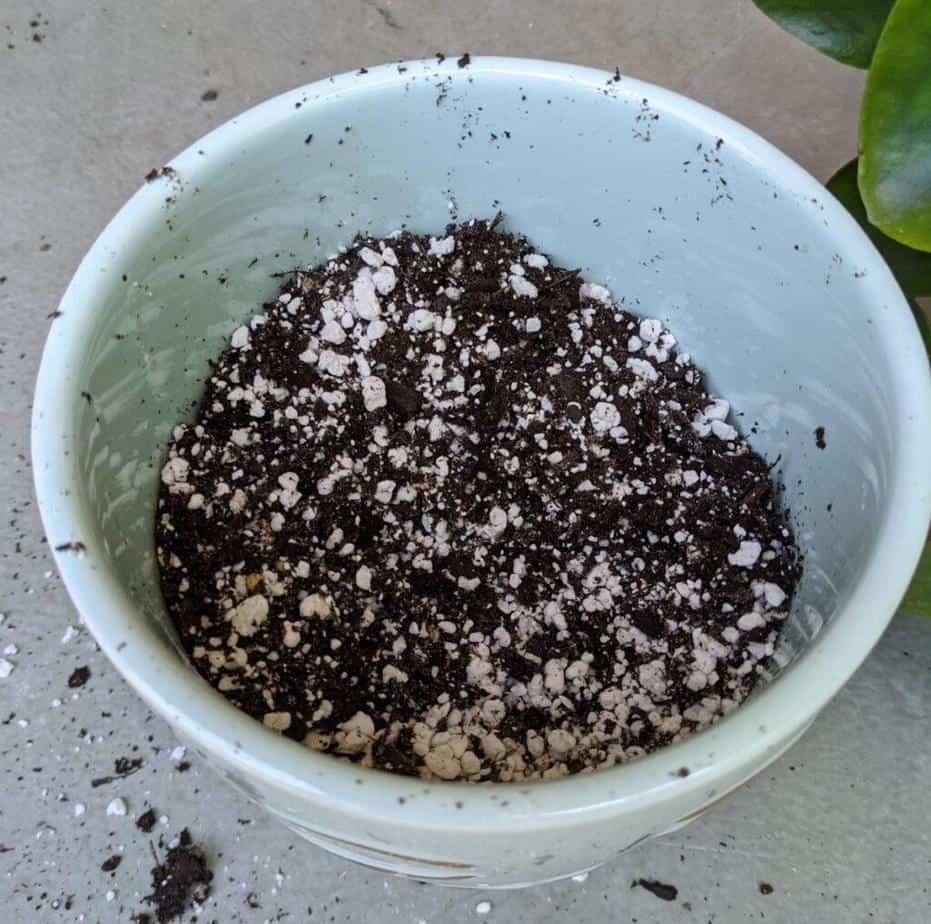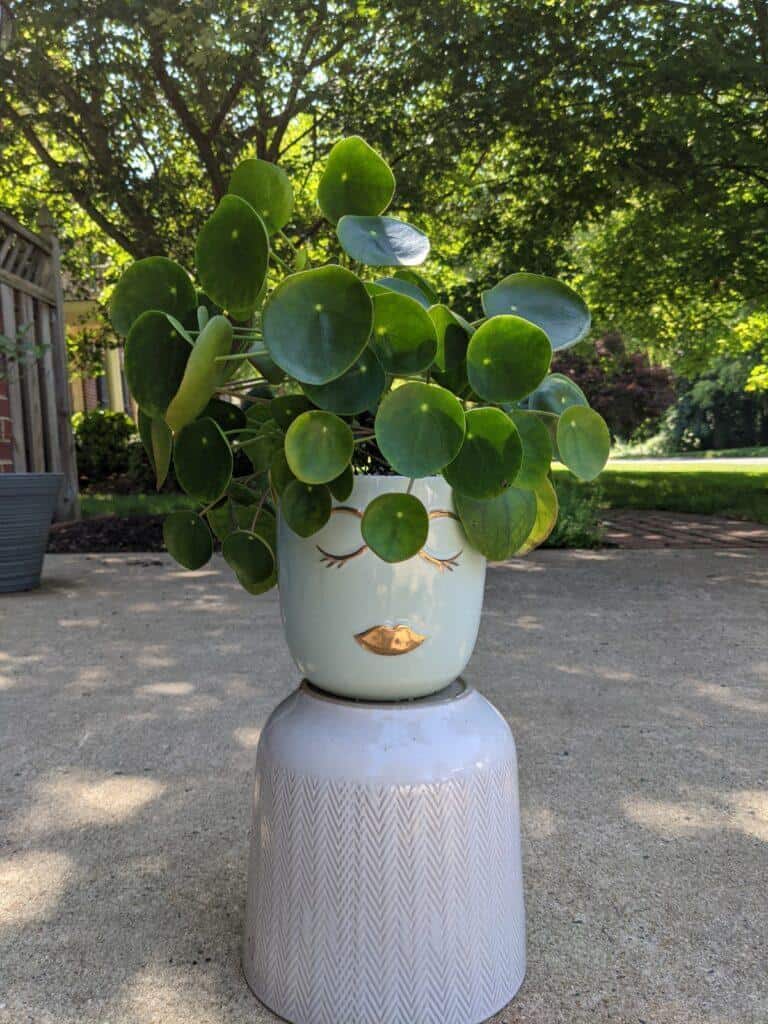I’ve noticed my Pilea Peperomioides, or Chinese Money Plant, has been kind of soggy looking lately. It’s actually hard to tell because I let mine grow very bushy with offshoots rather than pulling the pups. Luckily Pileas are pretty easy-going plants, so even though I think I may have overwatered it, it should still be fine.
Pilea Peperomioides
Pileas are cute little plants with circular leaves. Some people say they look like saucers. They grow vertically with no branching. Some people grow them tall as a singular stalk. In my opinion, that makes the Pilea Peperomioides leggy-looking. They are fairly prolific at sending out offshoots, or “baby” plants. If you leave them in the pot you can achieve a bushier look, like mine pictured below. People often take the pups out of the pot to propagate. I’ve had this for several years though and there are only so many Pileas you can have in one house. Hence their other nickname, the sharing plant.

Pliea Peperomioides require moderate to bright indirect light like you might get in an east or west– facing window. They can grow a few feet tall, although eventually need support. They should be watered when the top two inches of soil is dry. These plants grow relatively fast. Pilea Peperomioides are not toxic to cats or dogs.
Signs You Have Overwatered Your Pilea
The Pilea Soil isn’t Drying Out
The soil isn’t drying out in between normal watering intervals. There are several reasons this may be happening. You may be watering too often or too much. The plant and pot may not be getting enough light to dry out the soil. Your pot may not have drainage (not recommended, check out how to drill holes in plant pots) or insufficient drainage. Your soil mix may hold too much moisture. I personally noticed my Pilea was too wet when I saw there was water in the drip tray a day after I watered it.
Pilea Leaves Turning Yellow or Brown
Pilea leaves may turn yellow or brown when they have been overwatered for long enough. Luckily for me, that is not the case. What you want to look for is color changes from the outside of the leaf moving in. Pileas are a little tricky because the general wisdom is, that if a leaf is yellowing from the tip it’s a possible sign of overwatering. However, Pilea leaves are round so that’s a little tricky. If you have leaves at the base of your plant that are yellowing and dying off that may just be normal plant aging.
Your Pilea Stem is Squishy
If your Pilea stem is squishy, you already have root rot from long-term overwatering. At this point, you can try to behead the Pilea above the squish and try to propagate the plant from there.
How to Better Monitor Soil Moisture
I have multiple moisture tools and many years of plant care experience, which makes me a bit ashamed that I overwatered my Pilea. In my defense, she’s tucked behind a childproof barrier right now because of my toddler and that makes it a pain in the butt to check the soil. I typically take my cheap soil moisture meter around with me when I water my plants. It’s faithfully served me well for many years. If you’re tech-savvy you might also like the Smart Soil Tester. I also have this smart soil tester. I mainly use it to measure and assess light (see my write-up here), but it does measure soil moisture as well. The smart meter is really meant to be stuck in one plant and left there, so that’s why I don’t really use it for the moisture. Finally, the most economical way to check soil moisture is to stick your finger in the soil.

What to do With an Overwatered Pilea Peperomioides
Carefully remove it from its pot. An overwatered Pilea may have weakened roots from disease. Once you have removed the Pilea from its pot, you should gently clear excess soil away from the roots. Now it’s time to inspect the roots. Look for very brown or squishy roots. Those are signs of disease. These will need to be trimmed away with a clean cutting tool if you find them.

The roots on my Pilea seemed to be in pretty good shape. For example, you can see that nice fat white root hanging from the bottom. I have to admit, I was actually surprised at how shallow the root system was. It kind of makes sense though when you remember that the Pilea a is known for sending offshoot plants laterally.
Let the Root Ball Dry Out
As you can see I have a soggy mass of roots and soil. I let that sit outside of a pot for a day to facilitate the drying of the soil and root system. Once dry, you might want to gently remove more soil from the root system especially if your soil did not contain much drainage material to begin with. I actually have quite a bit of perlite in there already so I just left it as is.
Repot your Pilea
Once your root ball has dried out it’s time to repot your Pilea Peperomioides. There are a few things you want to consider.
- Pilea Pot – if you had trouble with overwatering, terracotta is basically the fastest drying type of pot. They aren’t the most glamorous, but they are very porous and that can definitely help if you have an overwatering issue.
- Pilea Pot Size – your pot may have been too big, therefore the soil was not drying out quickly enough. As we can see Pileas have fairly shallow roots so a smaller wider pot may work best. (Note: do as I say, not as I do. I fully acknowledge that I am repotting into a larger pot.)
- Pilea Soil Mix – overwatering may happen when a soil mixture does not contain enough drainage medium. To aid drainage, add perlite to your potting mix. Below you can see my soil mix. I used about a 3 to 1 ratio of potting soil and perlite.

With these things considered, it’s time to pot up your Pilea. Place sufficient soil mix into the pot so that the Pilea sits where you want it to. Then backfill the area surrounding the root ball. As I mentioned do as a say not as I do. I’ve had this face planter just waiting around for the perfect plant. It’s a bigger pot than the original Pilea planter so I will have to be extra careful about watering in the future. I hope it will be worth it though because I really love the final product of this plant and pot combo.


I'm a long time plant lover on the quest to happily coexist with as many plants as I can. Let's grow!

Are these plants spitting eyeballs at me bc they’re overwatered? https://youtu.be/qcb2Ptavzlw?t=518
Wow! That plant may have been over fertilized causing a mutation.